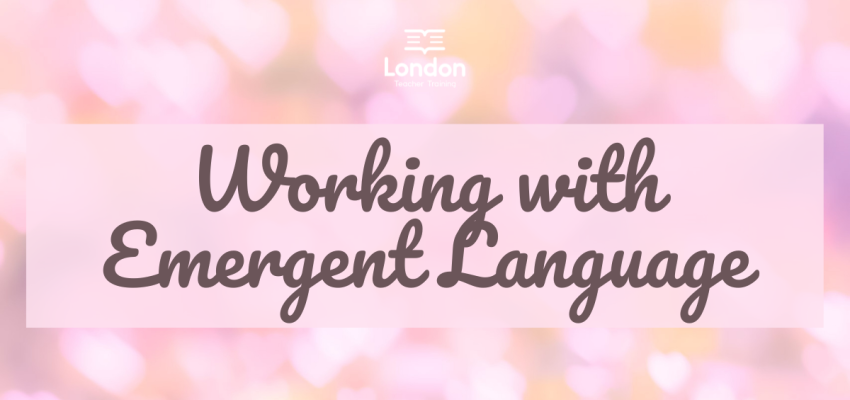Thursday, February 29, 2024

Emergent language is the language that comes up during our lessons which we had not planned for, but have to deal with, nevertheless. This can be tricky, as it is language that we have not included in our lesson plans, but that the students want and need to know about at that precise moment. All of this means that we have to think of a definition, context and examples on the spot, which can be a challenge even for experienced teachers. Indeed, it is the most common action point we give teachers when we observe their lessons, no matter what level they are teaching. In this blog post, we will look at techniques for working with emergent language, activities we can do with the language when it comes up and things to be careful of when new language arises in our lessons.
The first and most logical way to record emergent language is on the board, remembering always that the board is your best friend. Keeping a good record of new language on our boards is something that the learners can refer to throughout the lesson, and gives them the opportunity to try and use the new language at a later point during the class. If you don’t record new language on the board, that language disappears, and you miss out on an opportunity to make the most of it. When we record this language on the board it is also important to put it into a clear context for the learners so that the meaning is clear.
Other methods for recording the new language include keeping post-its, note cards or slips of paper in a box in your classroom on which you record the new language. Then, in future classes you can get these out to revise the language in the form of a fun activity such as taboo. Online resources such as Quizlet and Baamboozle are also great ways of recording the emergent language from our lessons and mean that you can use them time and again. Another advantage of this is that you can then set online revision activities for homework and the students can practise using the vocabulary at home, and it is all language that has been generated by the students themselves.
As mentioned above, the first thing to do with new language is put it on the board and provide the learners with a context in which it is used. If you feel confident, you could come up with, and ask a couple of content checking questions (CCQs) to make sure the students have understood. However, this might be something that you need more time to prepare, so don’t feel pressured to think of some relevant CCQs on the spot. Experienced teachers, however, should start to do this automatically with emergent language as effective and appropriate CCQs should come more naturally. Once you have this lovely new language on the board, you now have the opportunity to ‘go with the flow’ a little and ask some questions related to the new language items. Don’t feel that you have to stick rigidly to your lesson plan if some really interesting new language comes up and the students are genuinely interested.
It can be difficult to think of activities that you can do on the spot when emergent language arises in our lessons, so here are a few activities ideas that you can use in this situation. If you feel like you need more time to prepare these, you can also do them in the next lesson to allow you to prepare them more thoroughly, obviously making a note of the emergent language that you have written on the board previously.
The most important thing to remember is that emergent language is something that can really contribute to a lesson and is of real interest to the students. It is not something to fear, but rather something to embrace. So next time new language comes up in your class, try a few ideas from this blog to make the most of it!